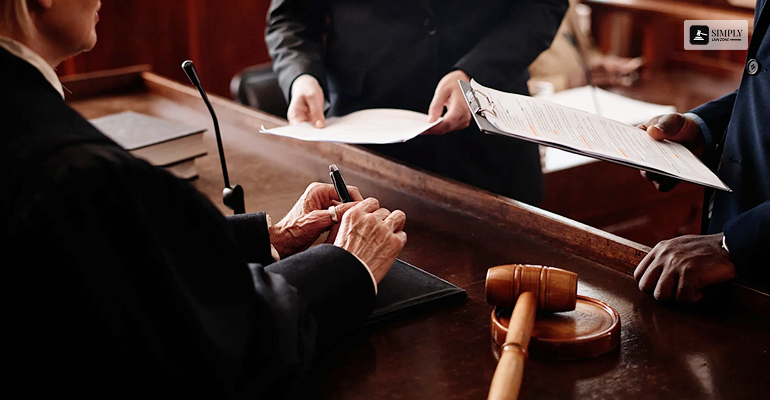
Have you ever taken a moment to consider the extent of the power judges actually hold? In fact, it is not just the black robes and gavels kind of power. Rather, it is about the type of power that shapes lives, rewrites laws, and sometimes overturns the Constitution.
That’s where the whole judicial activism vs judicial restraint debate comes to the fore. Obviously, it is not just some law school jargon. In fact, it is real, complicated, and is happening right now in courtrooms across the U.S.
Therefore, read on to get a better idea of the differences between judicial activism and restraint.
The Basics! Judicial Activism vs Judicial Restraint
At the outset, Judicial activism refers to when judges take bold action. They interpret the Constitution in ways that reflect modern values, social change, or their own beliefs (depending on who you ask). Think of the landmark judgment Brown v. Board of Education.
Meanwhile, Judicial restraint comes with the opposite vibe. Judges here play it safe and stick to the text. In this case, they defer to lawmakers. Their approach is more of: “Hey, it is not our job to make policy. We just interpret it.”
Although it sounds simple, it is actually quite complex in reality.
Judicial Activism vs Judicial Restraint: The Tug of War!

The difference between judicial activism and restraint is not merely a legal theory. Rather, it is a full-blown ideological tug-of-war. Moreover, this has been going on for decades.
Take Roe v. Wade (1973). This case involves large-scale activism. The Court recognized a woman’s right to choose — not explicitly written in the Constitution, but inferred through privacy rights.
Fast forward to Dobbs v. Jackson (2022), and restraint takes the wheel. The Court decides to hand this back to the states.
So, which is more effective? It depends on who you ask. Apart from that, it depends on the case as well as on the moment.
When Judicial Activism vs Judicial Restraint Gets Personal?
Neither judicial activism nor judicial restraint is just an abstract idea. Rather, they affect real people and real lives.
Let’s say you’re a student fighting for LGBTQ+ rights in school. You want the courts to step in. In this case, you are hoping for activism for a judge to say, “No, this isn’t fair. Let’s fix it.”
However, if the judge leans toward restraint, they might say, “Sorry, not our lane. Talk to your legislators.” Obviously, it might get frustrating. But that is what happens in most cases.
The Gray Zone! Judicial Activism vs Restraint Isn’t Always Black and White
In general, most decisions aren’t purely activist or purely restrained. This is because judges mix it up. Sometimes they’re bold. Sometimes they’re cautious. In other cases, they might even surprise everyone.
A classic example is Justice Roberts. He’s all about institutional integrity, but he’s swung both ways. For instance, he upheld Obamacare but pulled back voting rights.
Hence, it demonstrates that balancing judicial activism and restraint is a complex endeavor. This is the point of both these legal situations.
Judicial Restraint vs Judicial Activism: Who Gets to Decide?
In this case, the question is who decides what is “activist” and what is “restrained.” Is it the media, legal scholars, and Twitter?
However, the truth is that it is subjective. One person’s activism is another’s justice. Moreover, one person’s restraint is another’s betrayal.
Apart from that, it is also about political leanings. For instance, conservatives love restraint until they don’t, while liberals cheer activism until it backfires.
Why This Debate Still Matters?
The debate still matters because this legal situation shapes everything. These include civil rights, gun laws, healthcare, immigration, and more.
In fact, judges aren’t elected. They are appointed for life. That means their decisions echo for decades, long after presidents are gone and long after Congress changes hands.
Essentially, this isn’t just a law nerd debate. It’s democracy in action. Otherwise, it is in tension or in crisis, depending on the day.
Judicial Activism vs Judicial Restraint in the Age of Polarization
To be honest, America is divided when it comes to opinions about multiple legal questions. However, the court is caught in the middle.
Moreover, every big case now feels like a political earthquake. Some examples are abortion, affirmative action, gun rights, climate change, and more.
Meanwhile, the public is losing trust. A 2023 Gallup poll showed that confidence in the Supreme Court reached a historic low, at just 25%.
So, what happens when people stop believing in the system?
What happens when people see judges not as neutral referees, but as political players?
This becomes the danger zone. That is when the whole “judicial activism vs restraint” debate stops being academic. This is where it starts being existential.
Famous Cases That Shook the Balance
The following are some of the major cases that shook the balance between judicial activism and judicial restraint:
- Brown v. Board (1954) – This case is about activism and the desegregation of schools.
- Citizens United v. FEC (2010) – It might either be activism or restraint (depending on who you ask). However, it changed campaign finance forever.
- Obergefell v. Hodges (2015) – It favored activism and legalized same-sex marriage nationwide.
- Shelby County v. Holder (2013) – It favored restraint. However, it gutted the Voting Rights Act.
So, Now What?
Obviously, the judicial activism vs judicial restraint debate isn’t going away. In fact, the debate is intensifying. Also, every new justice, case, and cultural flashpoint adds fuel to the fire.
In addition to that, perhaps the tension is the point. Maybe democracy needs that push and pull. Apart from that, we need to rethink how much power we’ve handed over to nine unelected people in black robes.
Judicial Activism vs Judicial Restraint: Still the Big Question!
At the end of the day, judicial activism vs judicial restraint isn’t just a legal theory. Rather, it is a mirror. In fact, it reflects how we perceive justice, power, and ourselves.
Moreover, it is time we all paid a little more attention to what’s happening behind those courtroom doors. Whether it’s judicial restraint vs judicial activism or judicial activism vs restraint, one thing’s for sure: the stakes couldn’t be higher.


